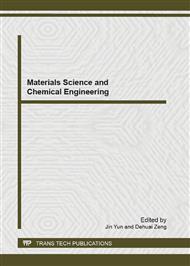p.869
p.875
p.885
p.893
p.900
p.904
p.909
p.915
p.921
Chemical Detection of SF6 Decomposition Products Generated by AC and DC Corona Discharges Using a Carbon Nanotube Gas Sensor
Abstract:
This paper describes application of carbon nanotube (CNT) gas sensor to chemical detection of sulfur hexafluoride (SF6) decomposition products generated by AC or DC corona discharge, aiming to develop a new diagnosis method of gas-insulated switchgear (GIS) filled with high pressure SF6 gas. Currently, most of GIS are designed and operated for conventional high voltage AC (HVAC) power transmission lines. Moreover, in recent years, the electrical power industry has shown a trend shifting from HVAC to high voltage DC power transmission, which has many advantages such as high power capacity and low power loss.This technological trend motivated us to explore and expand the application of CNT gas sensor to detection of SF6 decomposition products generated by AC and DC corona discharges. It was found that the CNT gas sensor exhibited significant response to AC and DC corona discharges and its dependency on the DC voltage polarity. In order to elucidate the mechanism of the polarity effect, SF6 decomposition products were analyzed by Fourier transform infrared spectroscopy as well as using a gas detection tube. Based on comparison between the polarity effects on the CNT sensor response and the decomposition products, a possible contribution of hydrogen fluoride to the CNT gas sensor response was suggested.
Info:
Periodical:
Pages:
909-914
Citation:
Online since:
May 2013
Authors:
Keywords:
Price:
Сopyright:
© 2013 Trans Tech Publications Ltd. All Rights Reserved
Share:
Citation:


